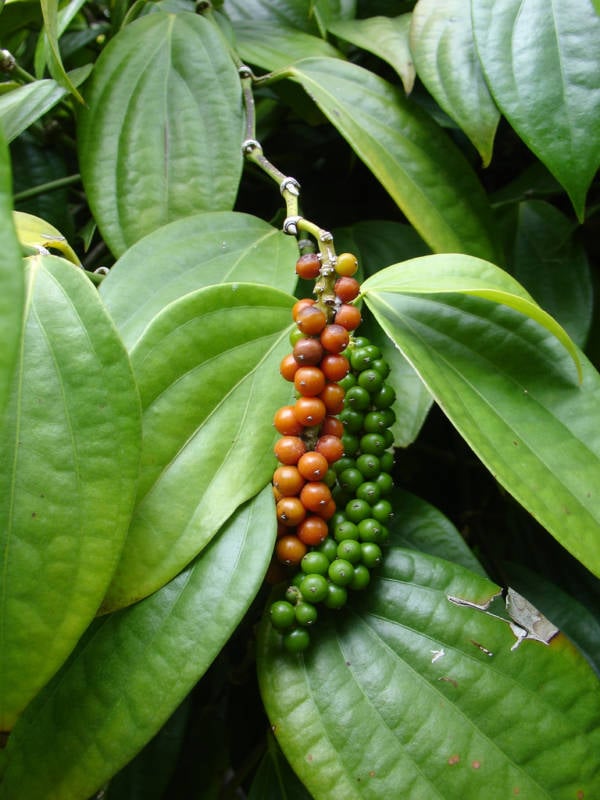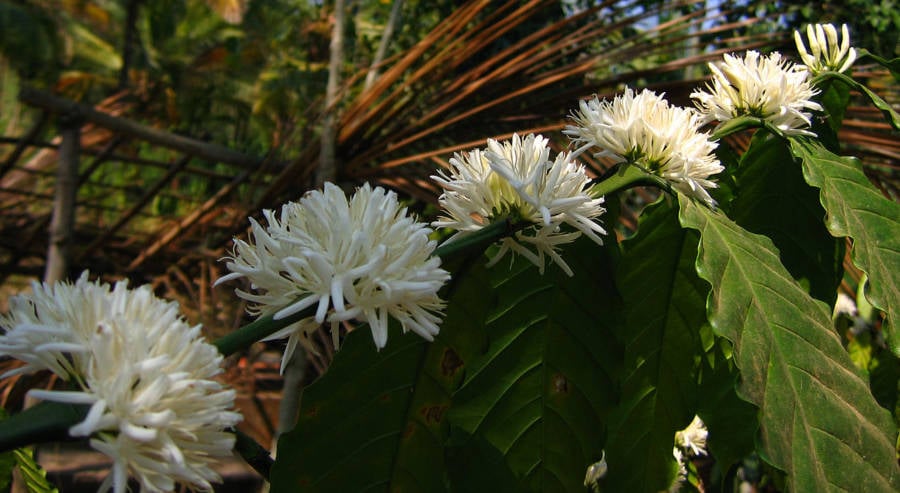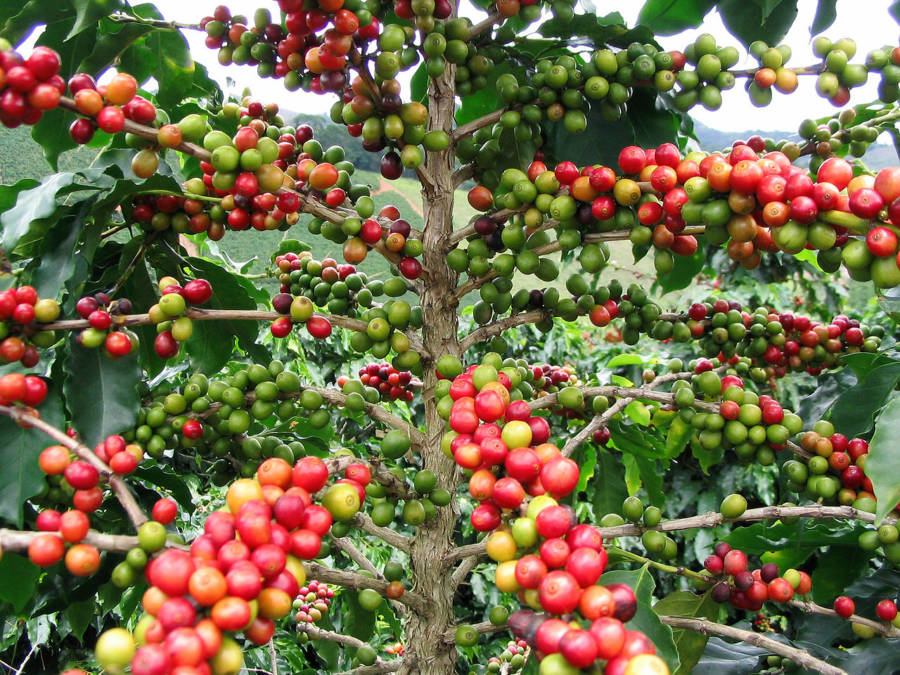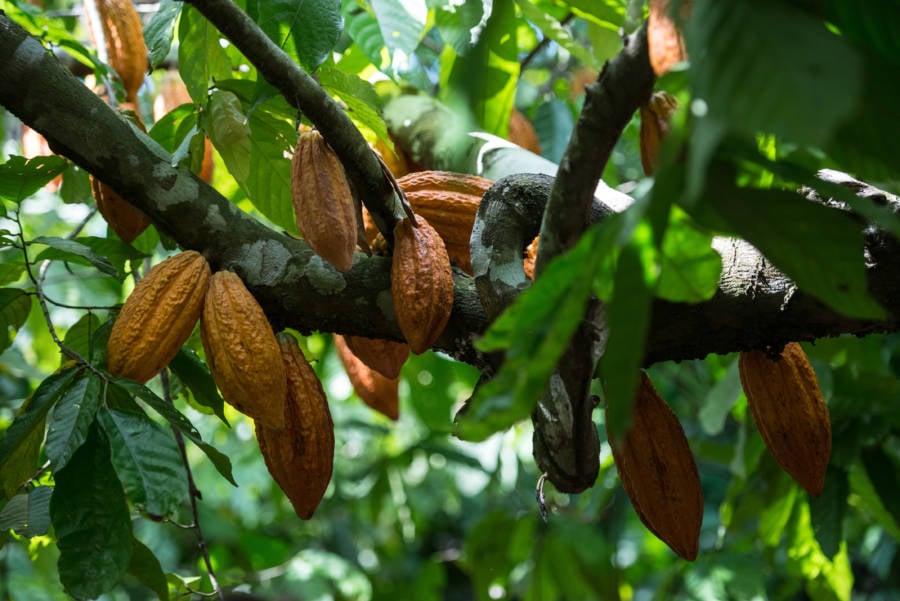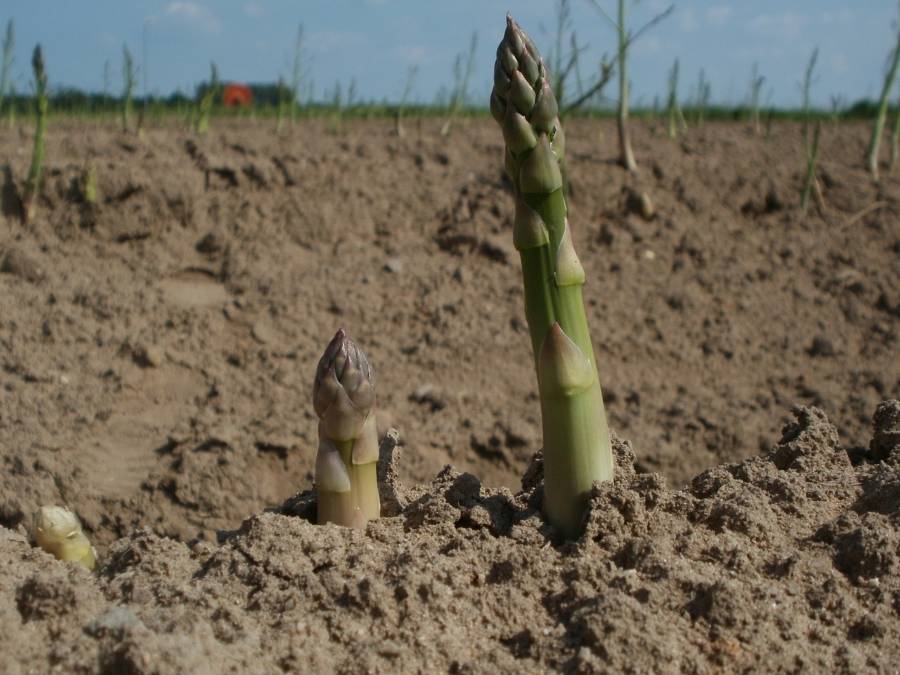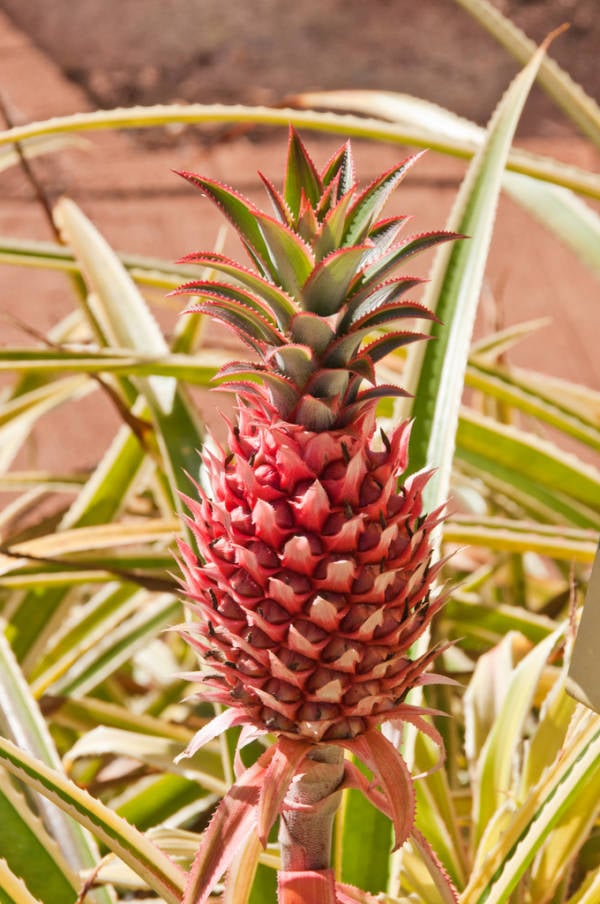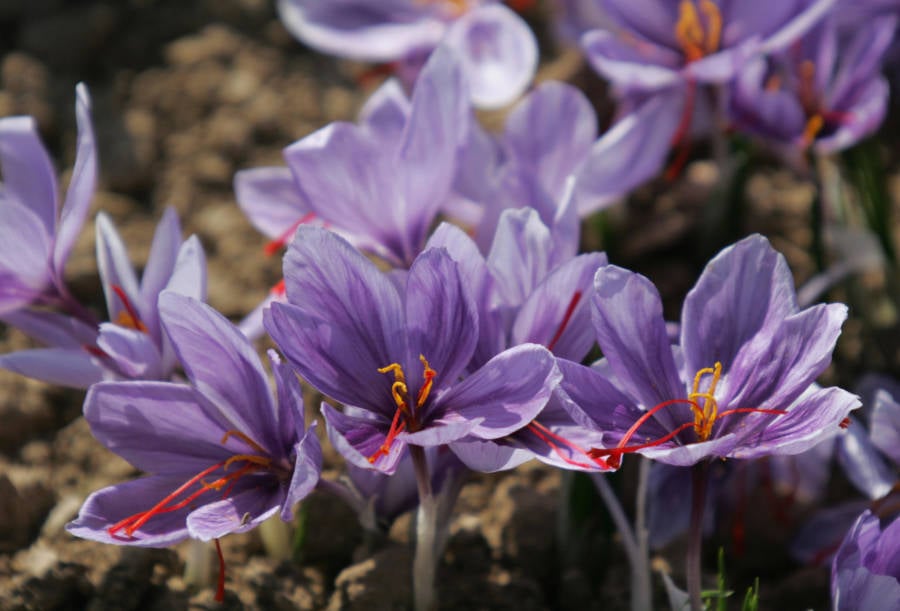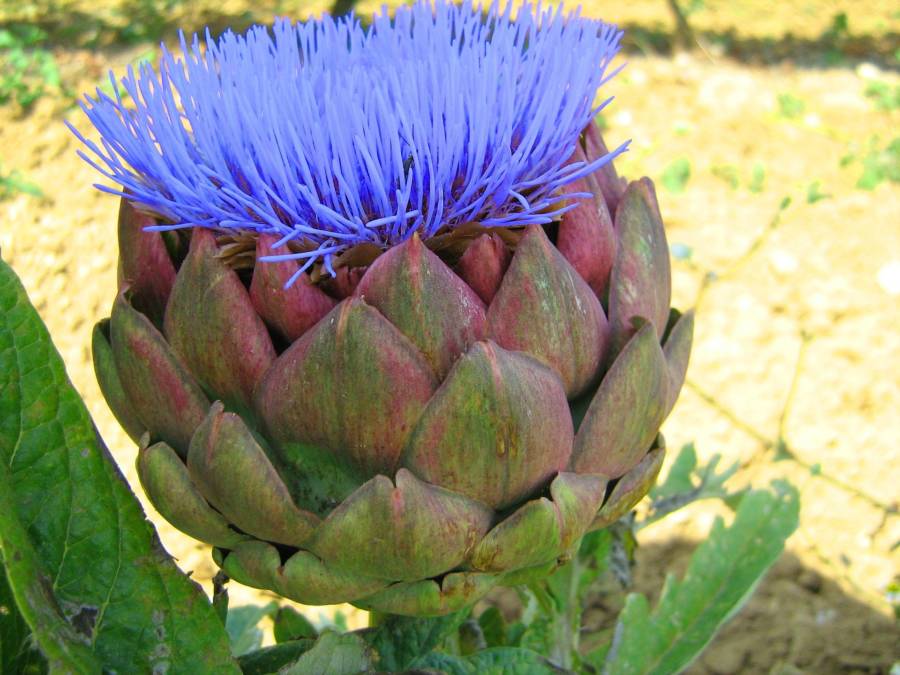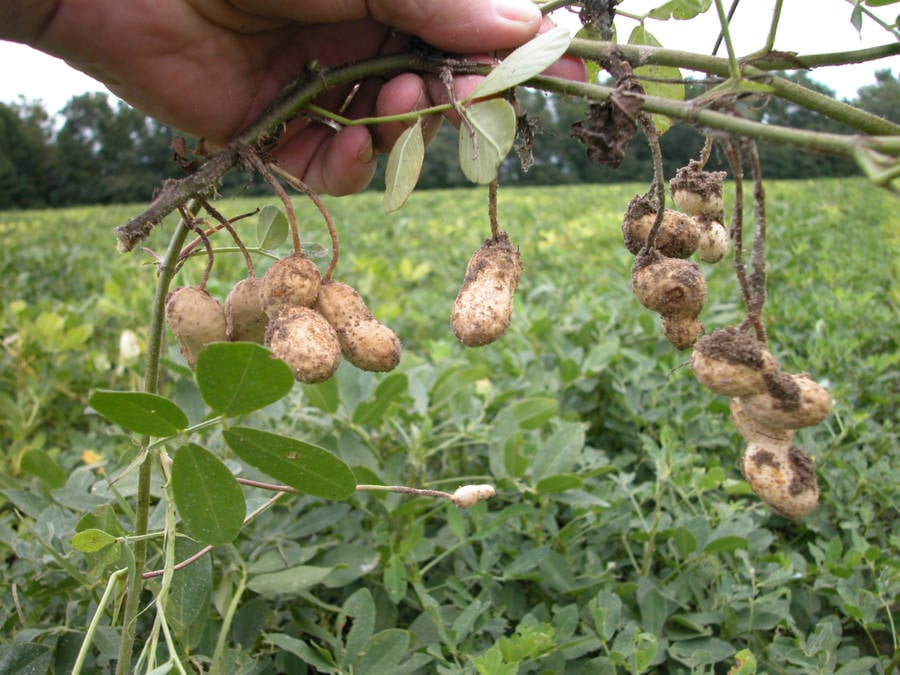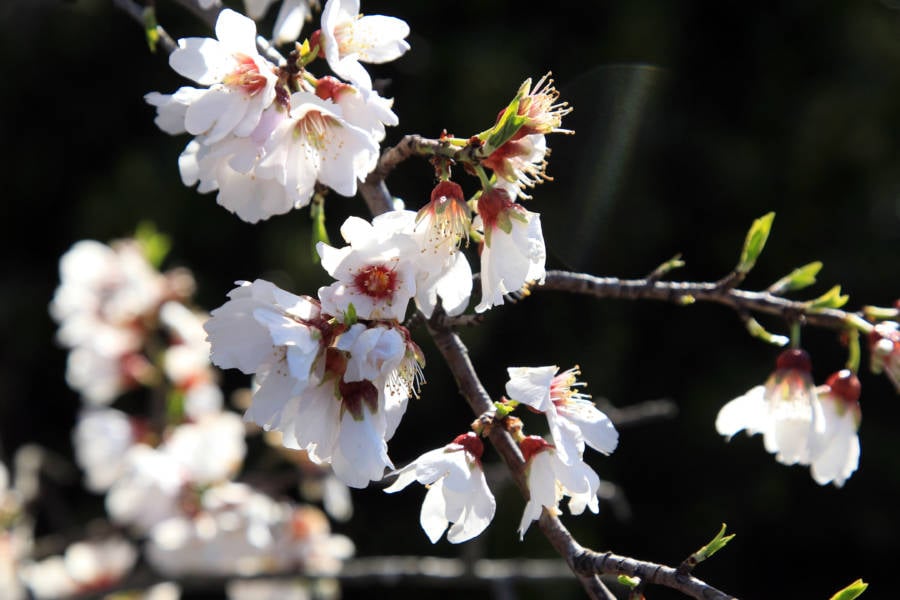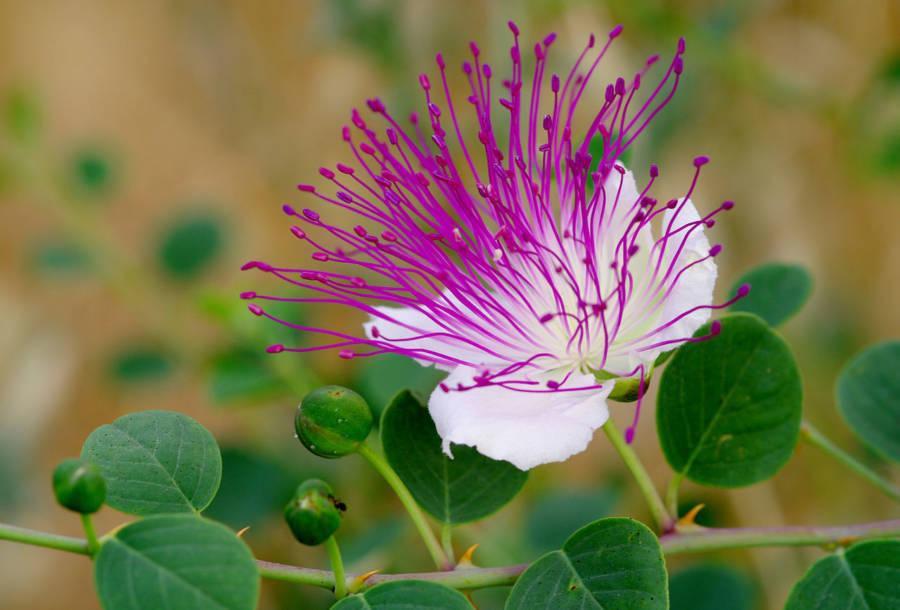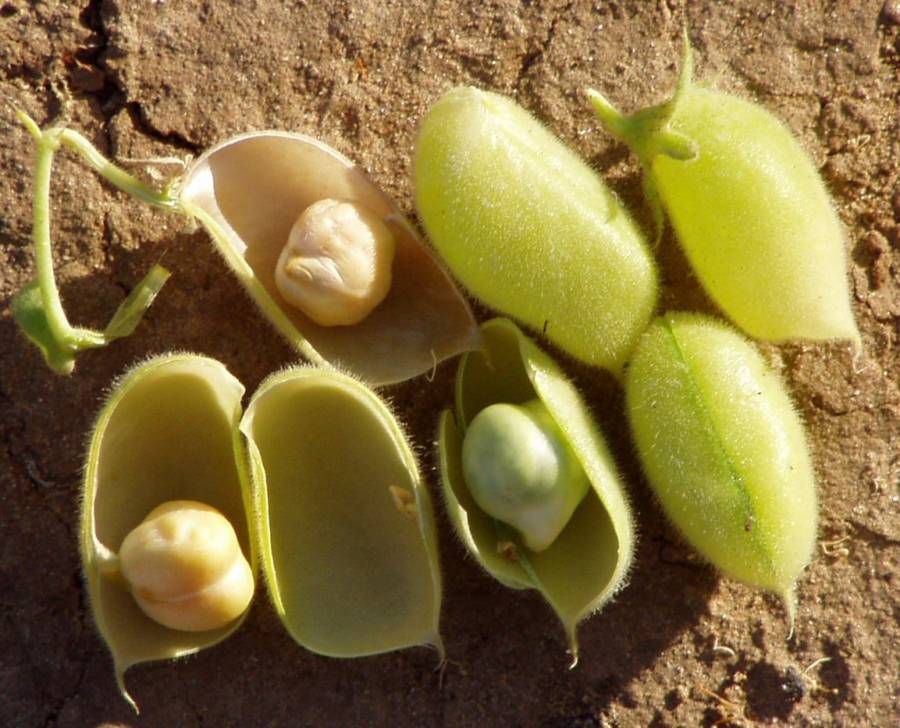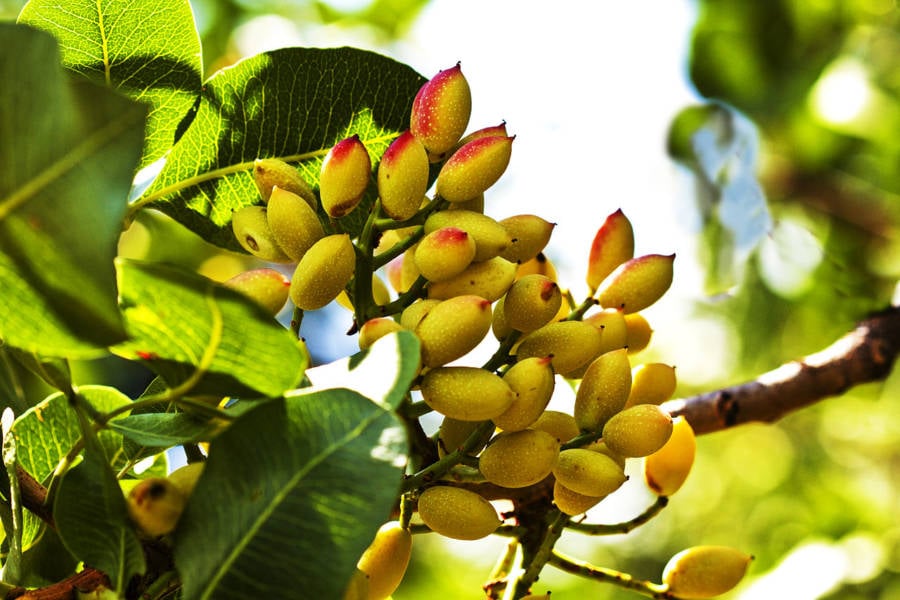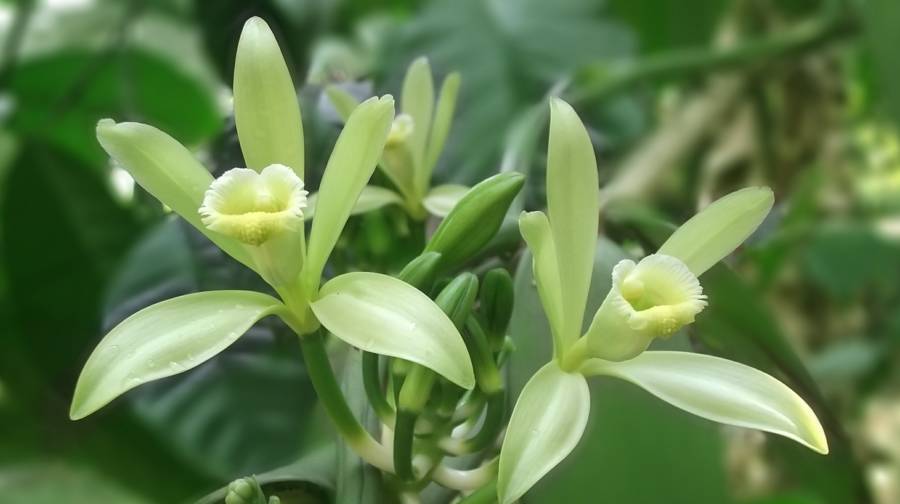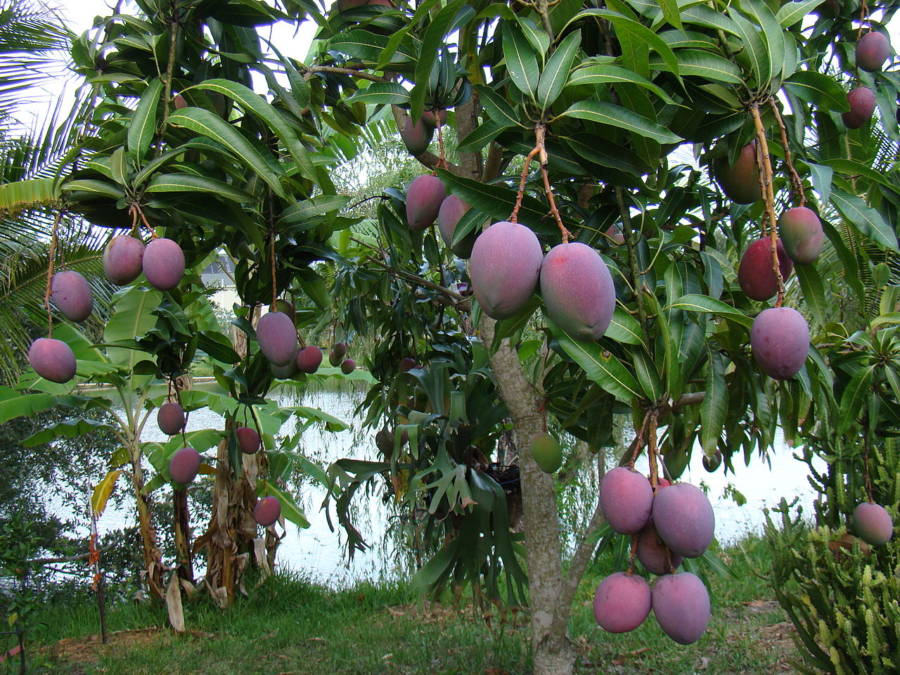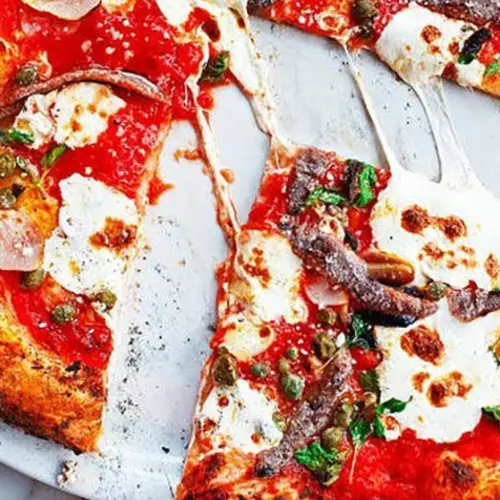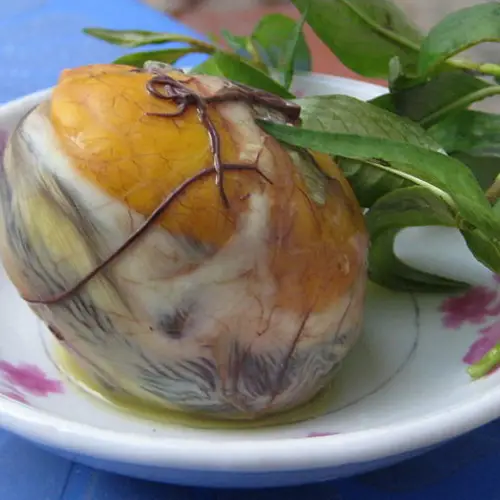1 of 28
Banana Blossom
The banana fruits that we eat grow on a stem above a large inflorescence (flower cluster), with the entire hanging stem capable of weighing more than 100 pounds. Pixabay
2 of 28
Cashew Fruits
Inside the green shell growing out of the yellow tree fruit pictured here are the edible seeds that we know as cashew nuts.Wikimedia Commons
3 of 28
Black Pepper Fruits
The fruits of this flowering vine are plucked, dried, and crushed to make the ubiquitous spice.Scott Nelson/Flickr
4 of 28
Coffee Flowers
The flowers of the Coffea plant are often forgotten in favor of its berries...Wikimedia Commons
5 of 28
Coffee Berries
Seeds (known as beans) are extracted from these berries, then processed in a number of ways including washing, fermenting, and roasting to produce what we know as coffee beans.Wikimedia Commons
6 of 28
Cacao Pods
The fruit pod of the cacao tree contains a sweet pulp as well as seeds (beans) are processed — including drying, fermenting, and roasting — in order to ultimately become chocolate.YASUYOSHI CHIBA/AFP/Getty Images
7 of 28
Asparagus Shoots
Asparagus shoots grow straight up out of the ground and are harvested before they can grow into a large flowering plant, the berries of which are poisonous to humans.Pixabay
8 of 28
Pineapple Plant
The pineapple, a berry of the Ananas comosus plant, is actually a multiple fruit: a cluster of fruiting flowers that mature into a single mass. Chris H/Flickr
9 of 28
Saffron Flowers
The edible red stamen (pictured) of the saffron flower is plucked and dried to become one of the world's costliest culinary items, with prices reaching more than $1,500 per pound, making it sometimes more valuable than gold.BEHROUZ MEHRI/AFP/Getty Images
10 of 28
Artichoke Flower
We harvest the edible, green, scale-like buds of the artichoke plant before they've flowered.Pixabay
11 of 28
Peanut Pods
Unlike most other plants, the seed pods of the Arachis hypogaea plant —which contain peanuts — grow underground and are pulled out along with the roots in order to harvest.Wikimedia Commons
12 of 28
Cinnamon Tree
First, farmers cut the stems of the cinnamon tree. Then, they wait for new shoots to grow up from the site, at which point they harvest them, scrape off the outer bark, loosen the inner bark with a hammer, and finally dry and grind that wet inner bark into a powder.Sandor Weisz/Flickr
13 of 28
Almond Tree Flowers
Almonds grow on a flowering tree found in warm, dry climates including the Middle East, California, and North Africa...RAYMOND ROIG/AFP/Getty Images
14 of 28
Almond Fruit
Those trees produce a drupe fruit (pictured), which contains a hard shell that surrounds its seed. It's this seed (the almond is a seed, not a true nut) that we eat.Wikimedia Commons
15 of 28
Kiwifruit Vines
In addition to light-colored flowers, these woody vines produce the edible berries we call kiwi.Wikimedia Commons
16 of 28
Caper Flower
Both the buds and (more commonly) berries known as capers come from this flowering plant found across several continents.Wikimedia Commons
17 of 28
Chickpea Pods
These pods of the Cicer arietinum plant contain the seeds we know as chickpeas.Wikimedia Commons
18 of 28
Pistachio Fruits
The drupe fruit of the pistachio tree is hulled and dried before its edible seeds are finally removed.Wikimedia Commons
19 of 28
Vanilla Flowers
The pods of the flowering orchid vines in the Vanilla genus contain seeds that are used as a flavoring on their own. Otherwise, the pods themselves are macerated with water and alcohol in order to produce vanilla extract.Pixabay
20 of 28
Celery Stalk
While we often focus solely on the celery plant's stalks, its leaves are in fact edible as well.edibleoffice/Flickr
21 of 28
Wasabi Roots
The stems of the flowering wasabi plant are either grated or dried and ground into powder to produce the condiment common in Japanese cooking.Wikimedia Commons
22 of 28
Sugarcane
Sugarcane is actually a grass that produces several stems, which mature into hardened cane stalks. It's these stalks that contain sucrose to be milled and refined into sugar.Wikimedia Commons
23 of 28
Sesame Pods
The edible seeds are found within the pods (or "buns") of the flowering sesame plant, which was first domesticated by human farmers more than 3,000 years ago.Wikimedia Commons
24 of 28
Paprika Fruits
Made from the same plant, Capsicum annuum, that produces bell peppers, paprika is made by air drying the plant's fruits and then grinding them down.Pressebereich Dehner Garten-Center/Flickr
25 of 28
Mango Trees
Mango trees can grow to more than 100 feet tall and produce fruit even after growing to 300 years old.Wikimedia Commons
26 of 28
Leek Blossom
Below flowers like these are the leaf sheaths (not stalks or stems, as is commonly thought) that we call leeks.Pixabay
27 of 28
Brussels Sprout Stalks
The stalks from which Brussels sprouts grow to about four feet in length.Steel Wool/Flickr
28 of 28
Like this gallery?
Share it:


